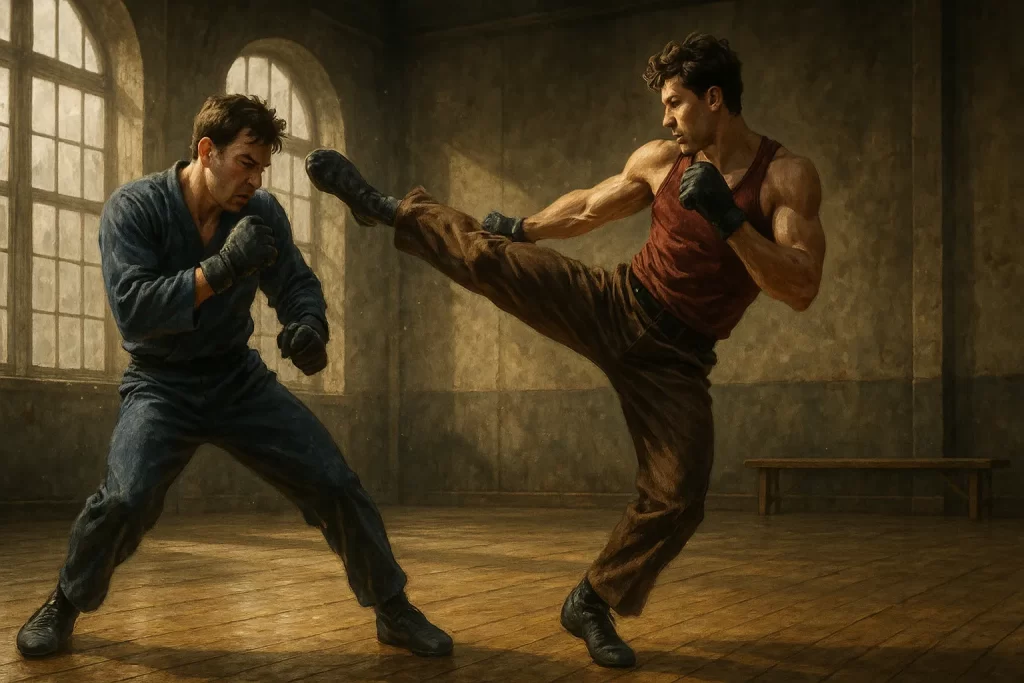Chausson Marseillais

Chausson Marseillais is an early form of French foot-fighting that emerged from the docks and alleys of 18th- and 19th-century Marseille. Known for its acrobatic kicks, open-hand techniques, and fluid mobility, it laid the groundwork for modern Savate before the art was formalized in Paris. This southern variant emphasized agility, unarmed improvisation, and fast low-line kicking, often practiced barefoot or in soft shoes (chaussons). Though largely historical today, it remains a vital cultural and technical influence on French striking arts.
Chausson Marseillais Essentials
About Chausson Marseillais
Discover the core identity of Chausson Marseillais—a raw, agile street-fighting system that predates modern Savate. This section introduces its roots, purpose, and influence on French martial culture.
Chausson Marseillais History
Explore how Chausson developed in Marseille’s maritime communities, blending sailor brawling, street defense, and theatrical flair. Learn how it later merged with Savate traditions from northern France.
Philosophy & Approach
Chausson emphasizes speed, mobility, and improvisation over structured technique. Its approach reflects a survival mindset rooted in street encounters and unregulated duels.
Techniques & Style
Dive into the kicking, sweeping, and evasive movement patterns of Chausson Marseillais. This section explores its trademark spinning kicks, foot traps, and balance-disrupting tactics.
Traditions & Etiquette
Unlike codified arts, Chausson’s etiquette is informal and rooted in local honor codes and mutual respect. Discover the unwritten rules that governed its practice in Marseille’s streets and gyms.
Uniform & Symbols
Practitioners traditionally wore simple linen pants and soft slippers (chaussons). This section explores the practical, minimalist attire that defined its visual and functional style.
Weapons
Though primarily unarmed, Chausson fighters were often familiar with knives or walking sticks due to Marseille’s rough port environment. Learn how these were occasionally integrated or defended against.
Ranking System
Chausson Marseillais historically lacked a formal ranking system. Progress was measured by experience, local reputation, and real-world effectiveness.
Chausson Marseillais Glossary
A glossary of key terms used in Chausson, including regional slang, kick names, and tactical expressions. Essential for understanding this historical Marseille fighting dialect.
Notable Figures
Meet the fighters, teachers, and cultural icons who kept Chausson alive through oral tradition and local training halls. Their legacy lives on in modern interpretations of the style.
Branches & Organizations
Though not widespread today, several French schools and researchers preserve Chausson through reenactment, cultural study, and Savate integration. This section explores where it survives today.
Competitive Format
Chausson was never a formalized sport, but some techniques have found their way into modern Savate and historical exhibitions. Learn how it’s adapted for safe demonstration and heritage preservation.

